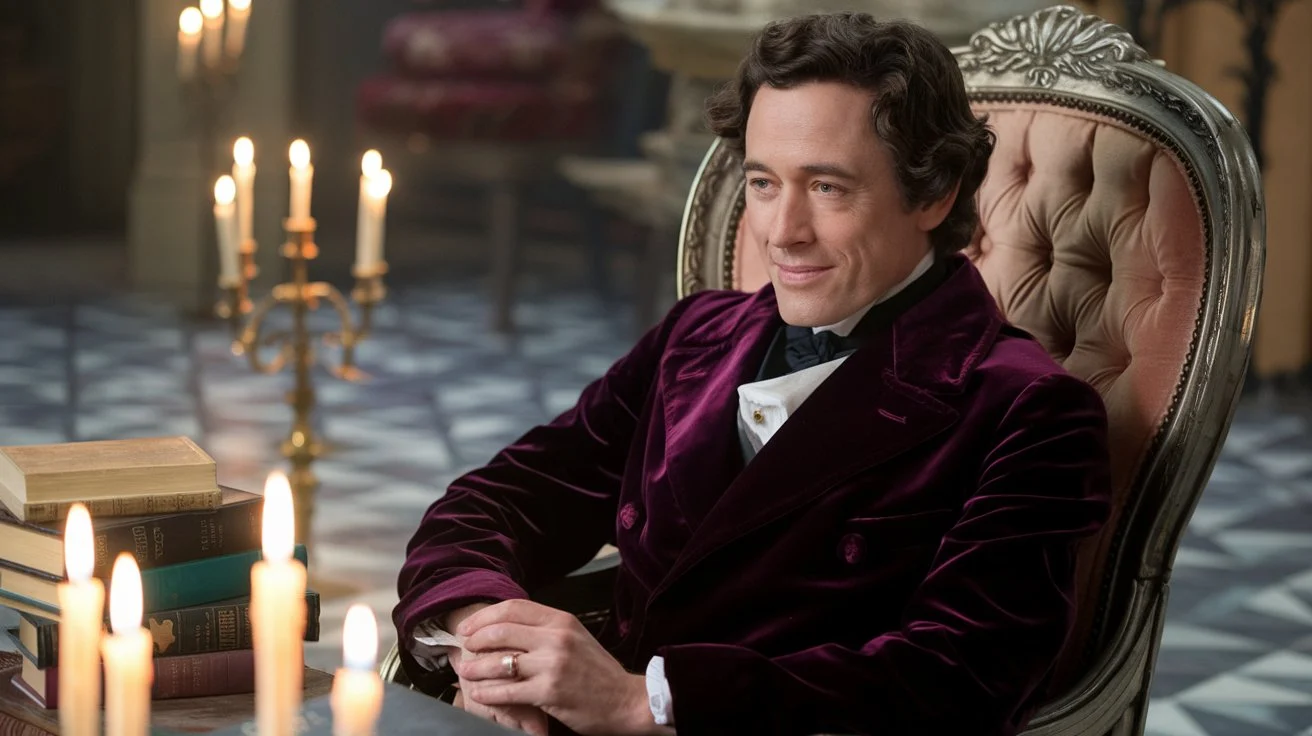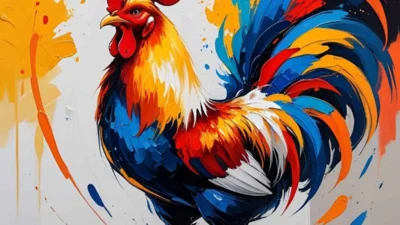In a quiet corner of Mexico City, a traveler pauses before a towering mural. As she stares, something stirs deep within—a spiritual pull, an awakening she cannot explain. The colors, the shapes, the people in the mural feel alive, whispering stories from another time.
Her heart beats faster as she asks herself: What does this mean? This is not just art—it’s symbolism, spirit, and soul, all woven into color. If you’ve ever been moved by a painting, mural, or animal encounter, your soul is searching for meaning—and that’s exactly what Diego Rivera wanted.
In this post, we will explore the spiritual meaning of seeing powerful symbols in art, especially Diego Rivera’s murals. You’ll learn why Rivera used symbolism, what he aimed to teach, and how others—like Frida Kahlo, Robert Henri, and the Fauves—did the same. Art is not just visual; it’s a mirror of spirit.
🎨 What Is the English Name of the Painting Above, and Why Did the Artist Choose That Name?
The mural in question is commonly titled “Man at the Crossroads” in English. This name wasn’t chosen randomly—it reflects Rivera’s deep spiritual message.
- 🖼️ The title represents humanity standing between two futures: technology vs. spirituality, war vs. peace.
- 🌐 Rivera wanted viewers to choose with awareness, to realize that we always stand at a spiritual fork in the road.
- ✨ The “crossroads” is a symbol of destiny, much like the moment when we encounter spiritual signs like animals or dreams.
- ⏳ In both mural and life, choices define our journey. Rivera’s name reminds us of the weight of that moment.
- 🕊️ Spiritually, crossroads have always meant a meeting point between realms—physical and divine.
- 🌱 In indigenous traditions, crossroads are where spirits speak. Rivera infused that into his painting.
- 📜 The mural name gives it prophetic power, urging us to think beyond the material.
- 🔍 He used a title that would force contemplation, not just admiration.
- 🧭 It aligns with his mission: to guide viewers toward awareness, not distraction.
- 🧠 Rivera once said, “Art must reflect the truth.” Naming it “Man at the Crossroads” captures his message of choice and responsibility.
🧬 What Were the Artist’s Two Major Influences for the Mural Above?
Rivera’s murals were born from a fusion of personal struggle and political passion—two forces that shaped his art and soul.
- 📚 Marxist ideology deeply influenced his work—he believed art should serve the people.
- 🎨 Mexican heritage, including Aztec and Mayan cultures, gave him a symbolic language to use in his murals.
- 🔥 He was passionate about equality and used historical imagery to demand justice.
- 🧱 Rivera believed that spiritual truth lies in remembering who we are, which is why he honored ancient civilizations.
- ✊ His politics weren’t just about power—they were about healing a broken spiritual connection between people and their past.
- 🐍 Aztec symbols like serpents and eagles carried mythological depth, resonating with universal truths.
- 🕰️ Rivera saw ancient history as a mirror of the soul, reflecting lessons we still need today.
- 🌻 Like shamans, he used visual storytelling to awaken consciousness.
- 🧩 His murals combined personal belief systems with collective spiritual themes.
- 🌍 Rivera’s art was about more than visuals—it was a bridge between the earthly and the divine.
🪞 What Do the Two Fridas in the Image Above Represent?
In Frida Kahlo’s painting The Two Fridas, a powerful dual-spirit message shines through—closely tied to Rivera’s own influence.
- 💔 The painting shows two sides of Frida: one in European dress, the other in Mexican attire.
- 🧠 This symbolizes her split identity—colonizer vs. indigenous, mind vs. soul.
- 🩸 One Frida’s heart is exposed and bleeding, while the other holds medical tools—a struggle between inner pain and external healing.
- 🪄 Spiritually, this reflects the duality in all of us—light and shadow, ego and spirit.
- 🧬 One Frida loves Diego, the other rejects him—a symbol of soul conflict and emotional betrayal.
- 🌙 In dreamwork, seeing doubles often means you’re facing a crossroads within your spirit.
- 🪷 Kahlo and Rivera both used art to explore soul wounds, not just physical ones.
- 🧘 The image suggests that spiritual wholeness comes from accepting both parts of the self.
- 🔮 Her work is a reminder that healing comes through integration—of body, mind, and spirit.
- 🌗 This painting is her way of saying: even when torn apart, the soul still speaks.
🎨 Who Is the Artist of the Image Above?
The mural “Man at the Crossroads” was created by Diego Rivera, one of the most spiritually driven and socially aware artists of the 20th century.
- 🧠 Rivera was more than a painter—he was a visionary philosopher with a brush.
- 🌄 His work focused on laborers, peasants, indigenous people—those often forgotten.
- 🖼️ He believed art should serve humanity, not just beautify walls.
- 🧱 Murals were his medium because they’re public, accessible to everyone.
- 🌞 Rivera was committed to revealing truth through colors and images.
- 🔁 He viewed painting as a spiritual responsibility, not just an act of creativity.
- 🎓 Trained in Europe, influenced by Cubism and Realism, but rooted in Mexican soul.
- 🐢 His style was slow, layered, and deeply intentional—like spiritual meditation.
- 📖 He told stories of pain, power, and hope in every mural.
- 🪞 Each mural was a mirror—reflecting not just society, but the soul of humanity.
💍 Diego Rivera Was Married To ______________.
The blank is filled with none other than Frida Kahlo, an artist whose soul screamed through every canvas.
- ❤️ Their love story was tumultuous, passionate, spiritual.
- 💫 Rivera saw in Frida a mirror of himself, someone spiritually complex.
- 🧿 Both used art as therapy for their inner wounds.
- 🌹 Their marriage was not perfect, but spiritually explosive—fueling their best work.
- 🔥 They were spiritual warriors, painting their pain into power.
- ✍️ Frida often painted Rivera into her pieces as a divine figure—both muse and god.
- 📜 Together, they shaped Mexican spiritual identity through art.
- 🩹 Even their conflicts became art—symbols of soul struggle.
- 🧘♀️ Marriage was more than romance—it was spiritual entanglement.
- 💔 Despite betrayals, they never stopped being each other’s soul mirrors.
🎯 Why Did Diego Rivera Use Symbolism, and What Was the Goal for His Murals?
Rivera used symbolism as a spiritual tool, not just an artistic method. His goal was soul awakening.
- 🛠️ His murals were built like sacred texts, with layers of meaning hidden in plain sight.
- 📢 Rivera believed that art should teach, not just entertain.
- 🌱 Every symbol—a hammer, a dove, a machine—was a message from the spirit realm.
- 🔓 He wanted people to decode their own truths by observing his murals.
- ⚙️ Industrial machines in his murals weren’t just objects—they symbolized man’s battle with soulless progress.
- 👁️ Rivera was waking people up: “See beyond what you see.”
- 🌀 He saw symbolism as the language of the soul, not the mind.
- 🎨 Colors were chosen to evoke emotion and spiritual memory.
- 🧠 Each mural was a meditation on justice, struggle, and redemption.
- ✊ The murals called on viewers to change the world—starting from within.
🧱 How Did Robert Henri Propel Realism?
Robert Henri helped shape Realism, an art form rooted in spiritual honesty and emotional truth.
- 🎓 He believed art should reflect ordinary life, not myth or fantasy.
- 👨👩👧👦 His subjects were workers, immigrants, children—the spiritual core of society.
- 💭 Henri taught that every person has a soul story, worth capturing in art.
- 🌟 He encouraged emotional depth over surface beauty.
- 📸 His work paved the way for Rivera’s emotionally truthful murals.
- 🎤 Henri said, “Art should be a voice of humanity.” That’s spiritual purpose in action.
- 🪶 Realism was more than style—it was a mirror to the soul.
- ✏️ He taught students to draw with empathy, not ego.
- 🔍 Henri helped artists stop “decorating” and start revealing truths.
- 🖼️ His influence opened doors for spiritually powerful art movements like Rivera’s.
🔥 Where and When Did Fauvism Begin?
Fauvism, though brief, was a bold attempt to paint with soul, not rules.
- 🌍 It began in France around 1905, led by artists like Henri Matisse.
- 🎨 Fauves (“wild beasts”) used vivid color and raw brushstrokes.
- 🧠 The movement rejected logic, focusing on emotion and spirit.
- 🔥 Color wasn’t just aesthetic—it was spiritual energy.
- 🌈 Their art broke norms to awaken deeper feeling.
- 🧿 Like Rivera, the Fauves wanted viewers to feel the soul of the art.
- 🎆 Fauvism believed that bold expression was a path to spiritual freedom.
- 🖌️ It was the spark that lit fires in movements like Expressionism and Muralism.
- ✍️ The style whispered: “Feel first, understand later.”
- 🔮 Rivera took those bold colors and fused them with cultural symbolism to reach hearts.
🖼️ What Is the Name of the Piece Above?
The referenced piece is “Man at the Crossroads”, a mural originally created for the Rockefeller Center.
- 🛑 It was controversial for its spiritual and political boldness.
- 🚫 The original was destroyed for being too “radical,” showing Lenin and workers.
- ✊ Rivera recreated it in Mexico as “Man, Controller of the Universe.”
- 🌐 Both names reflect human power and responsibility.
- 🔭 The piece shows man surrounded by technology, nature, war, and peace—a spiritual balance.
- 💡 It demands the viewer ask: What direction are we taking as a species?
- 🧭 Rivera used this painting to make us spiritually accountable.
- 🧠 It’s not just a painting—it’s a philosophical question in color.
- 🔄 The mural reflects back your own soul—your fears, your hopes.
- 🌟 It remains one of the most spiritually stirring artworks in modern history.
🌱 Real-Life Scenarios
1. Maria, the Student:
Maria walks past a Diego Rivera mural on her campus. She feels seen—like the faces in the painting reflect her inner struggles as a young woman trying to find her voice.
2. Jamal, the Dreamer:
Jamal sees a mural during a solo trip. Later, he dreams of it and wakes up knowing he must change careers to help others.
3. Evelyn, the Artist:
Evelyn paints in silence, but after studying Rivera, she starts to infuse symbols into her work. Her next piece moves her audience to tears.
❓ Frequently Asked Questions
1. What is the spiritual purpose of murals?
Murals act as soul mirrors, helping people reflect on their emotions, history, and purpose through symbolic storytelling.
2. Why was Rivera’s art controversial?
Because it exposed raw truths—about politics, power, and the human condition. That’s what made it so spiritually powerful.
3. How can symbolism in art guide healing?
Symbols bypass logic and speak directly to the heart and soul, unlocking insights that lead to emotional and spiritual healing.
4. Is there a spiritual connection between Rivera and Frida Kahlo?
Yes, their bond was rooted in emotional depth, mutual pain, and shared artistic vision—a true soul contract.
5. Can seeing a mural be a spiritual sign?
Absolutely. If you’re drawn to a mural unexpectedly, it may be your soul’s way of calling attention to a hidden truth.
💖 Conclusion: Art That Awakens the Soul
Diego Rivera didn’t paint to impress—he painted to awaken. His murals hold more than color—they hold truth, spirit, pain, and healing. When we stand before his works, we aren’t just looking at paint—we’re standing at our own spiritual crossroads. Like animal encounters that whisper messages, these murals call the soul home. Listen.

Oscar Wilde combined wit, beauty, and deep symbolism to reveal the spiritual contrasts of human life. His works often reflect the journey of the soul — from desire and art to truth and redemption. Wilde’s timeless reflections remind readers that beauty and wisdom are paths to understanding the divine within.



